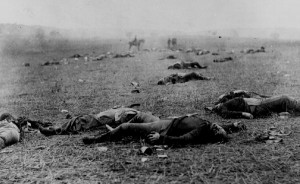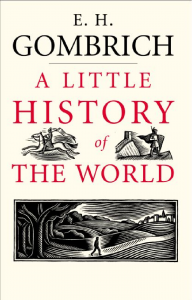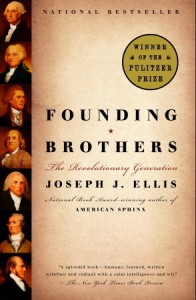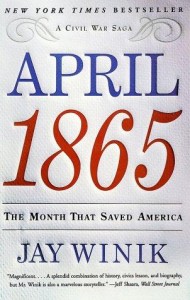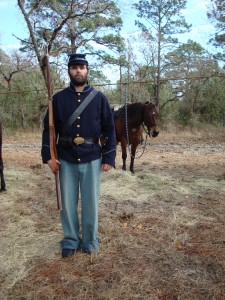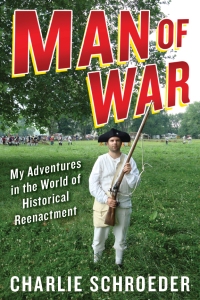A Q&A shot by David Johnston of DK9 Studio in Pasadena, California.
Tag: Civil War
I’ll be on this weekend’s episode, Been There, Done That.
Civil War News Review
Civil War News recently reviewed Man of War. Click here to read what they have to say.
Wall Street Journal Review
The Wall Street Journal has reviewed Man of War. Read it here.
Civil War Death Count Revised
Historian David Blight recently estimated that 750,000 Americans lost their lives in the Civil War. The previous agreed upon number was 620,000. The new figure marks a 21% increase. Most died from disease. Read the full article here.
Man of War-Official Book Trailer
Me Like History Books
Since the middle of last year I’ve been digitally archiving the books I read on the website Goodreads. Why? I read so many books while writing Man of War that I had a hard time keeping track of them all. A virtual bookshelf not only helps me remember what books I’ve read, but what’s inside them. I think 85% of our learning is visual (don’t quote me on that), so I guess the “memory spark” I get from seeing a cover works.
In all, I read sixty-two books while writing Man of War, in between jetting off to reenactments and holding down a full-time job. I nearly lost my mind, and yes, my wife is the most patient person on the planet. I often make reference to this within its pages.
Here are my three favorite books from the sixty-two I mentioned before…in no particular order.
A Little History of the World, by E.H. Gombrich. Gombrich is a master storyteller and he’s at his finest in this charming book. Wisely titled A Little History of the World, it often feels as though you’re reading something he’s recited dozens of times to a child. He devotes most of his time to Western history, which is fine, and don’t expect anything too in-depth. In fact, he pretty much ignores the American Revolution, which I’d argue deserves more than the line or so he dedicates to it. Still, it’s a great introduction to history.
Founding Brothers, by Joseph J. Ellis. Far more in-depth than Gombrich’s tale, Founding Brothers takes a look at a number of key events that helped shape our early republic. Often a challenging read, it’s nonetheless a fascinating exploration into our Founding Fathers’ deft political jockeying. The portrait he paints of the men is, not surprisingly, a heck of a lot more complex than your typical high school history class.
April, 1865, by Jay Winik. I defy any American to read this book and not become completely obsessed with The Civil War. While the raw material of this tumultuous month (the fall of Richmond, Lee’s surrender at Appomattox, Lincoln’s assassination and the subsequent manhunt for Booth) is already pretty captivating stuff, it took a diligent researcher and storyteller like Winik to put it all together in an engrossing package.
How to Break One’s Eardrum
Step One: Grow a hideously itchy beard.
Step Two: Pay your two-dollar entry fee to the Brooksville Raid, Florida’s largest Civil War reenactment.
Step Three: Dress in over-sized itchy woolen fatigues, a pair of old Campers and borrow a Kepi from a kind Yank. Take your position next to a rather corpulent infantrywoman who, like you, is new to the reenacting hobby. (And who, from this time forward, shall be known as Roseanne Barr.)
Step Four: Blithely go about volleying blanks with your fellow soldiers while Roseanne Barr mistakenly loads three packets of gunpowder down the barrel of her replica 1862 Enfield musket.
Step Five: On the “F” in “Fire!” pull the trigger of your musket, then as the crack of Roseanne Barr’s makeshift “cannon” knocks you and your fellow reenactors ten feet sideways, bend over, grab your ear and scream an expletive.
Step Six: Play dead and later shoot a video in which you narrate your demise (below at 1:15).
Coming this weekend, the 32nd annual Brooksville Raid, Florida’s largest Civil War reenactment.
Man of War
I’ve written a book titled Man of War: My Adventures in the World of Historical Reenactment. It’s released on May 24th, 2012, but can be pre-ordered on Amazon now. In it I reenact my way through 2,000 years of Western civilization, from Ancient Rome to Vietnam. In addition to the latter time periods, I don the uniforms and civvies of a Civil War soldier (Union and Confederate), a Polish Winged Hussar, a Revolutionary soldier, French and Indian War soldier, bateauman, Viking, Spanish friar and a Nazi. Yes, people reenact the Wehrmacht.
More to come in the following months.
